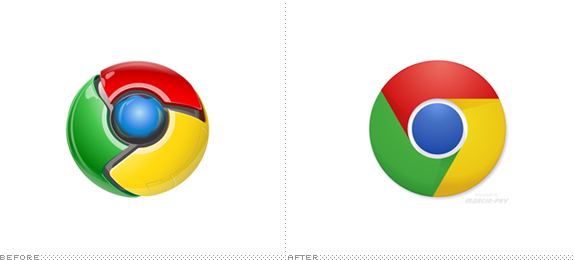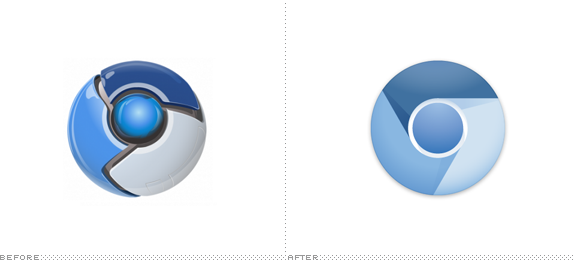Facebook Comments could be the most disruptive feature released by Facebook. Why? Comments are one of the largest sources of meta content on the web. Our conversations provide a valuable feedback mechanism, giving greater context to both users and to search engines.
The Walled Garden
Using Firebug you can quickly locate Facebook Comments and determine how they’re being rendered. Facebook Comments are served in an iframe.
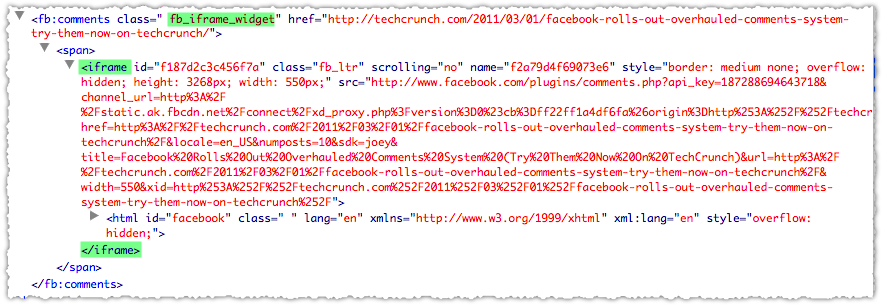
This means that the comments are not going to be attributed to that page or site nor seen by search engines. In short, Facebook Comments reside in the walled garden. All your comments are belong to Facebook.
This differs from implementations like Disqus or IntenseDebate where the comments are ‘on the page’ or ‘in-line’. One of the easier ways to understand this is to grab comment text from each platform and search for it on Google. Remember to put the entire text in quotes so you’re searching for that exact comment phrase.
Disqus Comments
Here’s a comment I made at Search Engine Roundtable via Disqus.
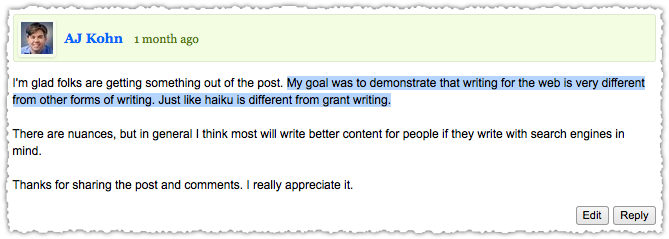
Here’s a search for that comment on Google.

Sure enough you can find my comment directly at Search Engine Roundtable or at FriendFeed, where I import my Disqus comments.
Facebook Comments
Here’s a comment made via Facebook Comments on TechCrunch.
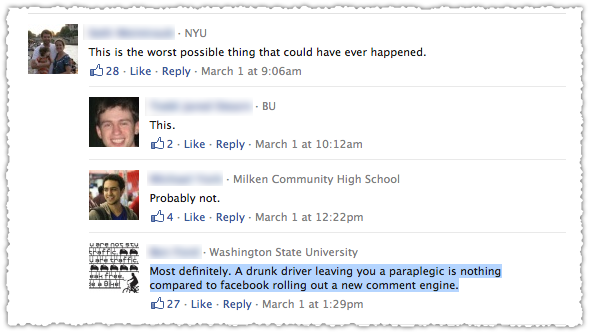
Here’s a search for this comment on Google.

In this instance you can’t find this comment via search (even on Bing). The comment doesn’t exist outside of Facebook’s walled garden. It doesn’t resolve back to TechCrunch.
I thought of an edge case where Facebook Comments might show up on FriendFeed (via Facebook), but my test indicates they do not.
Comments and SEO
Search engines won’t see Facebook Comments. That is a big deal. Comments reflect the user syntax. They capture how people are really talking about a topic or product. Comments help search engines to create keyword clusters and deliver long-tail searches. Comments may signal that the content is still fresh, important and popular. All that goes by the wayside.
It’s no secret that search engines crave text. Depriving Google of this valuable source of text is an aggressive move by Facebook.
Is this on purpose? I have to believe it is. I can’t know for sure but it’s curious that my Quora question has gone unanswered by Facebook, even when I’ve asked a specific Facebook Engineer to answer.
Comment Spam
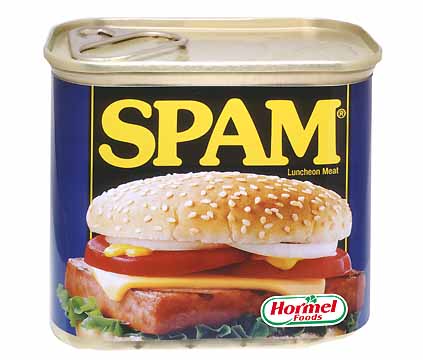
Comment spam is a huge problem. You know this if you’ve managed a blog for any amount of time. Google’s implementation of nofollow didn’t do much to stop this practice. So Facebook Comments is appealing to many since the forced identity will curtail most, if not all, of the comment spam.
This also means that the meta content for sites using Facebook Comments may be more pristine. This should be an advantage when Facebook does any type of Natural Language Processing on this data. A cleaner data set can’t hurt.
Article Sentiment
Extending this idea, you begin to realize that Facebook could have a real leg up on determining the sentiment of an article or blog post. Others might be able to parse Tweets or other indicators, but Facebook would have access to a large amount of proprietary content to mine page level and domain level sentiment.
Comment Reputation
Facebook can improve on sentiment by looking at comment reputation. Here’s where it gets exciting and scary all at the same time. Facebook can map people and their comments to Open Graph objects. It sounds a bit mundane but I think it’s a huge playground.
Suddenly, Facebook could know who carries a high reputation on certain types of content. Where did you comment? How many replies did you receive? What was the sentiment of those replies? What was the reputation for those who replied to you? How many Likes did you receive? How many times have you commented on the same Open Graph object as someone else?
You might be highly influential when commenting on technology but not at all when commenting on sports.
The amount of analysis that could be performed at the intersection of people, comments and objects is … amazing. Facebook knows who is saying what as well as when and where they’re saying it.
PeopleRank

Facebook Comments could go a long way in helping Facebook create a PeopleRank algorithm that would help them better rank pages for their users. If I haven’t said it recently, Facebook’s Open Graph is just another version of Google’s Search Index.
In this instance, Facebook seems to be doing everything it can to develop an alternate way of ranking the web’s content while preventing Google from doing so. (Or am I projecting my own paranoia on the situation?)
PeopleRank could replace PageRank as the dominant way to organize content.
Traffic Channel Disruption
The traffic implications of Facebook Comments are substantial. By removing this content from the web, Facebook could reduce the ability of Google and Bing to send traffic to these sites. The long tail would get a lot shorter if Facebook Comments were widely adopted as is.
We’ve seen some anecdotal evidence that referring traffic from Facebook has increased after implementing Facebook Comments. That makes sense, particularly in the short-term.
The question is whether this is additive or a zero-sum game. In the long-run, would implementing Facebook Comments provide more traffic despite the potential loss in search engine traffic via fewer long-tail visits?
For publishers, the answer might be yes. For retailers, the answer might be no. That has a lot to do with the difference between informational and transactional search.
Even posing the question shows how disruptive Facebook Comments could be if it is widely adopted. It could be the true start of a major shift in website traffic channel mix.
Share and Tell:

































 Back in September 2009, I got
Back in September 2009, I got 



